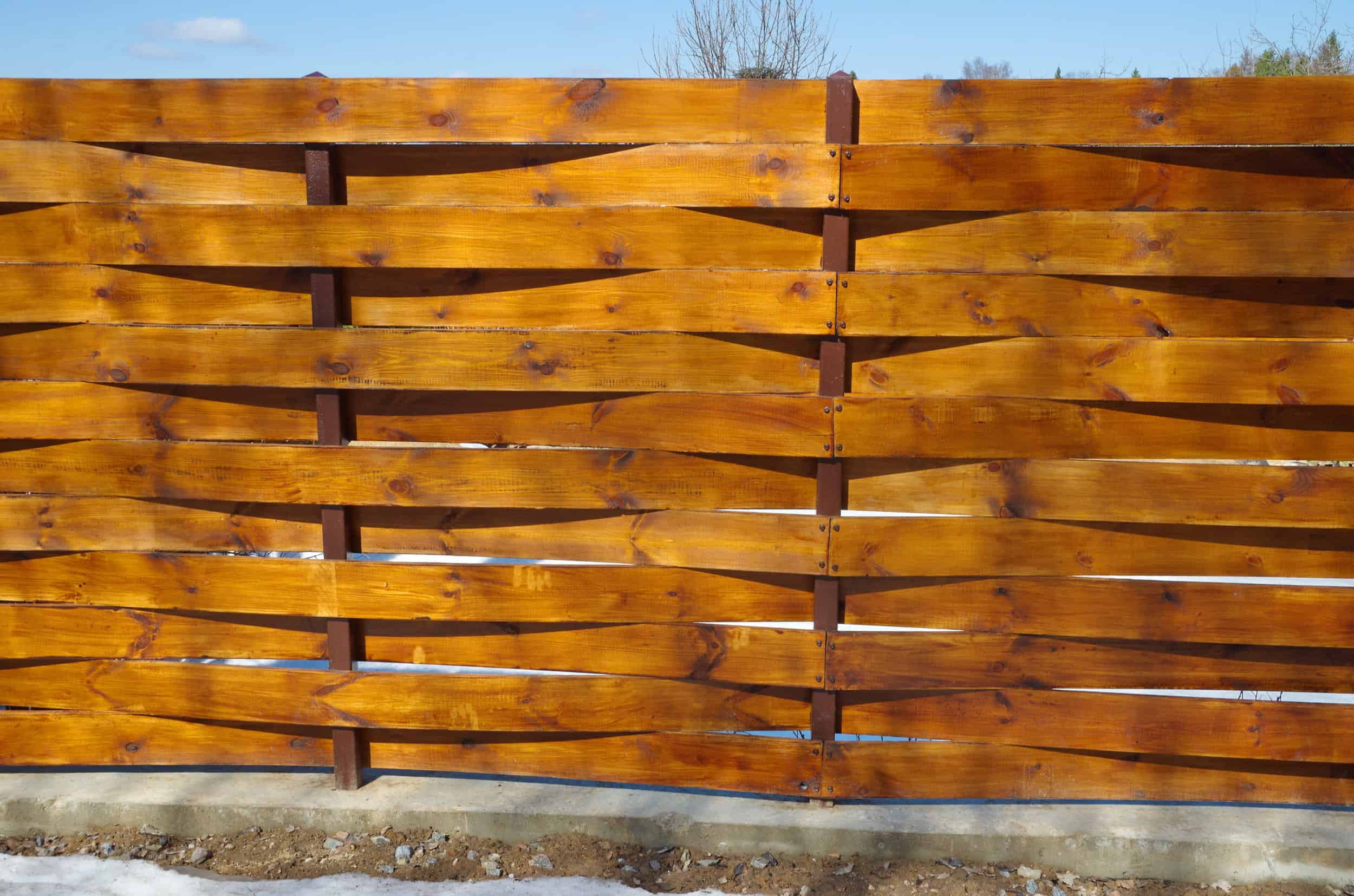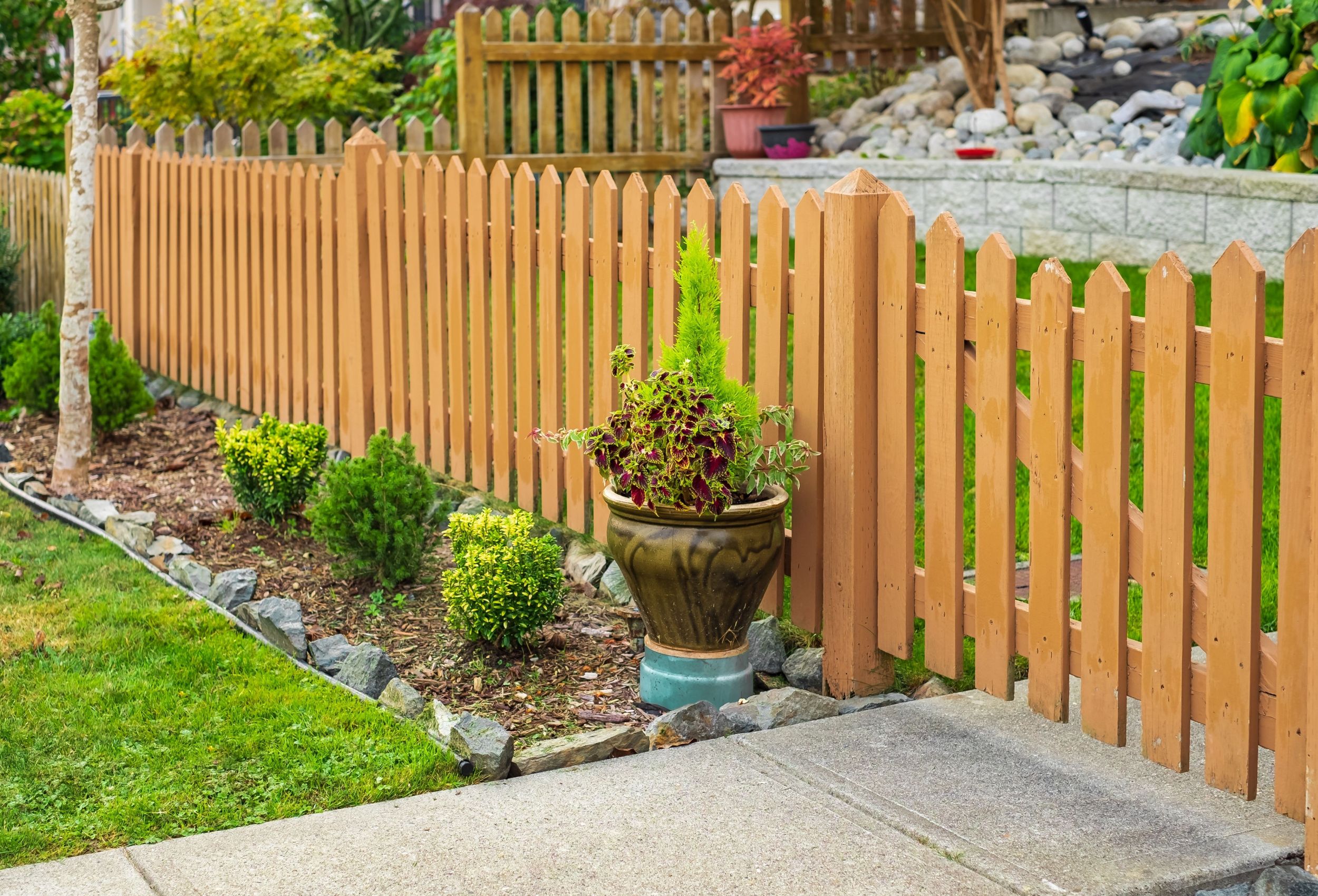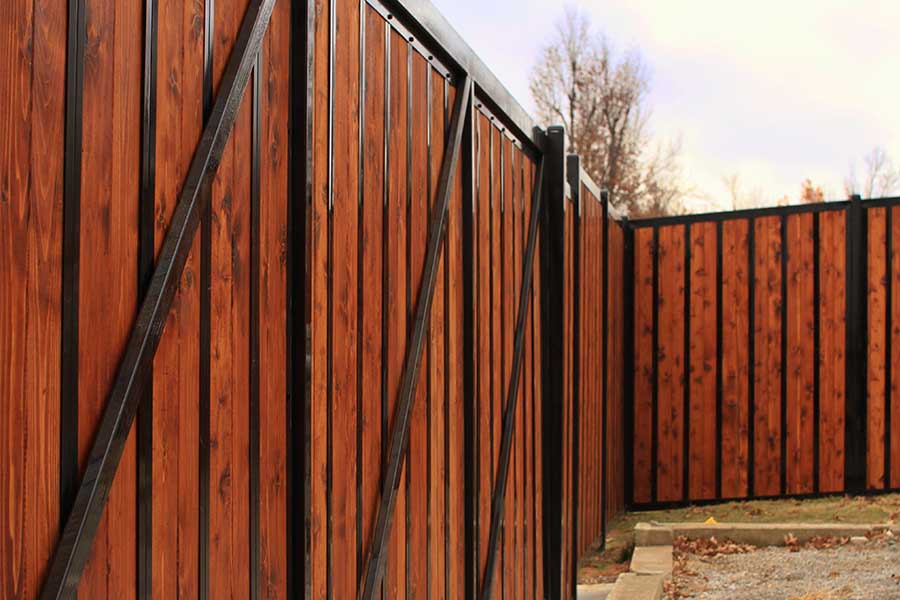All Categories
Featured
When it concerns preserving a wooden fencing, property owners usually deal with the choice of whether to repaint or stain. Both choices have their disadvantages and pros, and the option ultimately relies on your visual choices, the sort of wood, and just how much maintenance you want to dedicate to. Here's a thorough contrast to assist you make an educated decision.
The Essentials of Paint and Discoloration
Paint entails covering the wood with a nontransparent layer of shade. It provides complete insurance coverage, hiding the wood grain while offering outstanding security versus ecological elements.
Tarnishing penetrates the wood, boosting its natural elegance while including a protective layer. Relying on the type, discolorations can vary from clear to strong, allowing varying levels of timber grain exposure.
Pros and Cons of Paint
Pros:
Variety of Colors: Paint deals unlimited shade alternatives, enabling you to match your fence to your home's exterior or personal style.
Longer Lasting: Premium exterior paint can last approximately 5-7 years, requiring much less constant reapplication.
Superior Defense: Paint forms a thick, strong barrier against wetness, UV rays, and insects.
Disadvantages:
Splitting and peeling off: In time, paint can crack or peel, particularly in areas with extreme climate condition.
Hides Natural Timber Appeal: If you love the all-natural grain of wood, paint may not be the most effective option.
Higher Upkeep: Repainting requires scraping off the old paint, which can be labor-intensive.
![]()
Benefits And Drawbacks of Discoloration
Pros:
All-natural Appearance: Spots protect and improve the all-natural charm of the timber, making it ideal for high-quality lumber like cedar or redwood.
Easier to Reapply: Unlike paint, discolorations do not peel or fracture. Reapplying discolor normally calls for much less surface area preparation.
Versatile Finish Alternatives: Stains come in transparent, semi-transparent, and solid selections, providing various degrees of coverage.
Cons:
![]()
Much Shorter Life Expectancy: Stains, semi-transparent and specifically transparent ones, might require reapplication every 2-3 years.
Limited Shade Options: While stains use natural tones, they do not have the broad shade scheme readily available with paint.
Much Less Safety: Stains penetrate the timber however do not give as thick an obstacle as paint, making them slightly less protective against extreme climate.
Variables to Think About
Aesthetic Preferences: If you want lively shades and complete coverage, paint is the way to go. For a rustic and natural appearance, choose discolor.
Timber Kind: Top notch timbers with attractive grains benefit from staining, while lower-grade woods can be painted for a refined look.
![]()
Climate: In damp or humid climates, paint's thicker obstacle might use much better protection. In dry or modest climates, stains can be enough.
Upkeep Commitment: Paint entails less constant reapplication yet more effort throughout touch-ups. Discoloration calls for routine maintenance however is simpler to manage.
Final Ideas
Both painting and discoloration can successfully protect and enhance your wood fencing. The best choice depends on your priorities, whether they favor visual appeals, longevity, or simplicity of upkeep. By understanding the benefits and disadvantages of each, you can select the coating that aligns with your requirements and ensures your fencing remains a standout function of your building for years to find.
The Essentials of Paint and Discoloration
Paint entails covering the wood with a nontransparent layer of shade. It provides complete insurance coverage, hiding the wood grain while offering outstanding security versus ecological elements.
Tarnishing penetrates the wood, boosting its natural elegance while including a protective layer. Relying on the type, discolorations can vary from clear to strong, allowing varying levels of timber grain exposure.
Pros and Cons of Paint
Pros:
Variety of Colors: Paint deals unlimited shade alternatives, enabling you to match your fence to your home's exterior or personal style.
Longer Lasting: Premium exterior paint can last approximately 5-7 years, requiring much less constant reapplication.
Superior Defense: Paint forms a thick, strong barrier against wetness, UV rays, and insects.
Disadvantages:
Splitting and peeling off: In time, paint can crack or peel, particularly in areas with extreme climate condition.
Hides Natural Timber Appeal: If you love the all-natural grain of wood, paint may not be the most effective option.
Higher Upkeep: Repainting requires scraping off the old paint, which can be labor-intensive.

Benefits And Drawbacks of Discoloration
Pros:
All-natural Appearance: Spots protect and improve the all-natural charm of the timber, making it ideal for high-quality lumber like cedar or redwood.
Easier to Reapply: Unlike paint, discolorations do not peel or fracture. Reapplying discolor normally calls for much less surface area preparation.
Versatile Finish Alternatives: Stains come in transparent, semi-transparent, and solid selections, providing various degrees of coverage.
Cons:

Much Shorter Life Expectancy: Stains, semi-transparent and specifically transparent ones, might require reapplication every 2-3 years.
Limited Shade Options: While stains use natural tones, they do not have the broad shade scheme readily available with paint.
Much Less Safety: Stains penetrate the timber however do not give as thick an obstacle as paint, making them slightly less protective against extreme climate.
Variables to Think About
Aesthetic Preferences: If you want lively shades and complete coverage, paint is the way to go. For a rustic and natural appearance, choose discolor.
Timber Kind: Top notch timbers with attractive grains benefit from staining, while lower-grade woods can be painted for a refined look.

Climate: In damp or humid climates, paint's thicker obstacle might use much better protection. In dry or modest climates, stains can be enough.
Upkeep Commitment: Paint entails less constant reapplication yet more effort throughout touch-ups. Discoloration calls for routine maintenance however is simpler to manage.
Final Ideas
Both painting and discoloration can successfully protect and enhance your wood fencing. The best choice depends on your priorities, whether they favor visual appeals, longevity, or simplicity of upkeep. By understanding the benefits and disadvantages of each, you can select the coating that aligns with your requirements and ensures your fencing remains a standout function of your building for years to find.
Latest Posts
Discover Leading Car Repair Services at Montclare Auto Repair – Quality Service Today
Published May 29, 25
1 min read
Specialist Industrial Roofing Solutions in North Platte, Nebraska
Published May 26, 25
2 min read
Trustworthy Industrial Roofing Providers by Weathercraft
Published May 23, 25
2 min read
More
Latest Posts
Discover Leading Car Repair Services at Montclare Auto Repair – Quality Service Today
Published May 29, 25
1 min read
Specialist Industrial Roofing Solutions in North Platte, Nebraska
Published May 26, 25
2 min read
Trustworthy Industrial Roofing Providers by Weathercraft
Published May 23, 25
2 min read